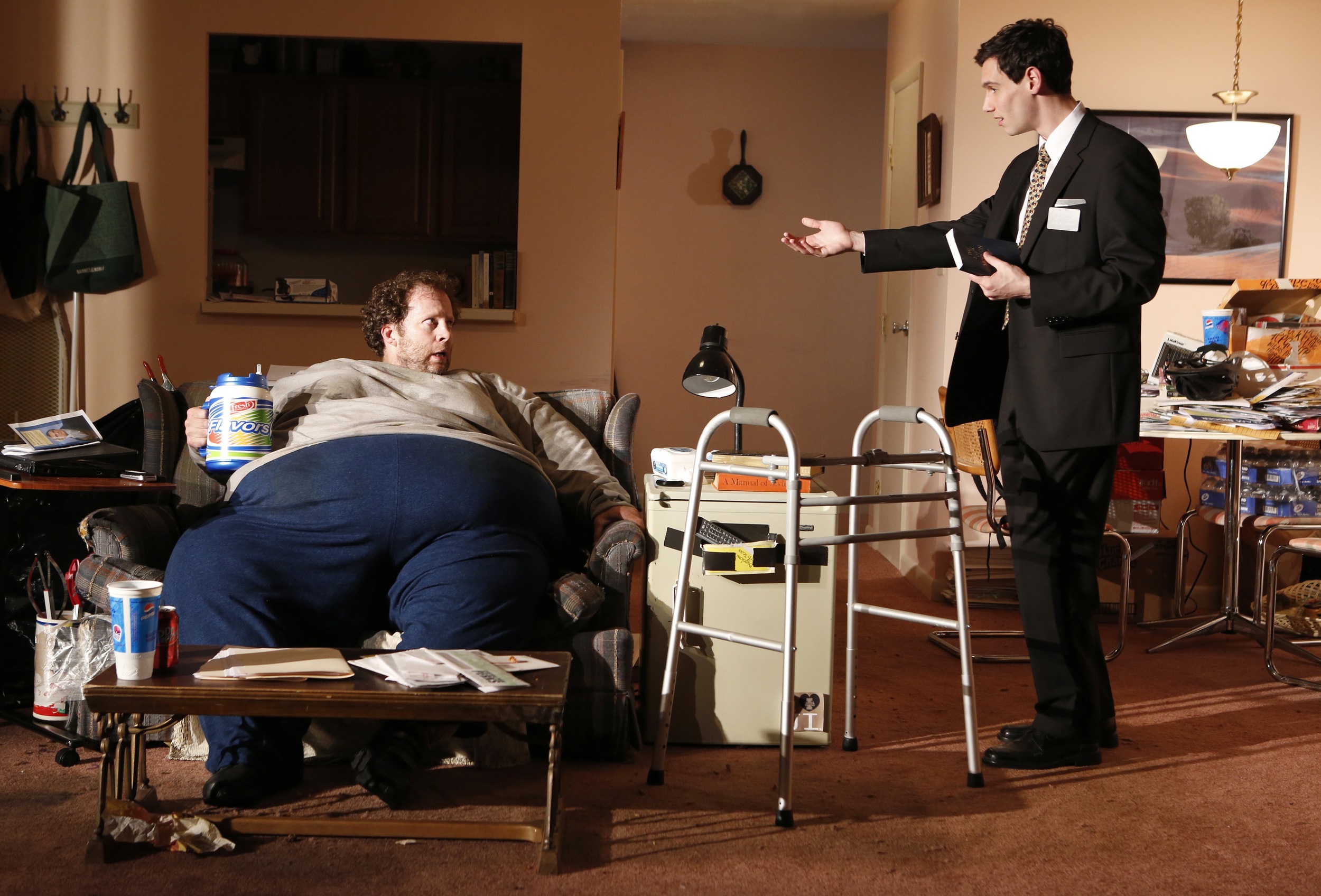Left to right, César Alvarez, Eric Farber, Sammy Tunis and Lorenzo Wolff, of the Lisps. Image courtesy of The Lisps.
This month's hot ticket has been on Fourth Street, where Taylor Mac is bringing Brecht back to life in the critically lauded Good Person of Szechwan. Rollicking, zany and heartfelt, it is everything we've been told Brecht isn't supposed to be—and it is absolutely marvelous. Although the show is built upon Mac's typically white-hot all-singing, all-dancing performance, Good Person is bolstered by its house band: The Lisps.
A Brooklyn-based band whose instruments include a suitcase full of bells and a built-in washboard, their look is whimsical but their sound has meat. In 2012, they premiered Futurity, a musical of their own. Astor Place Riot spoke this morning with bandleader César Alvarez, about doing musicals yourself, and how to keep Brecht from boring. Good Person of Szechwan runs through February 26th. I suggest bludgeoning whomever you have to in order to secure a ticket.
How did you get attached to this project?
Basically, Taylor Mac is an acquaintance and sort of a hero of mine. They were trying to nail down what they were doing musically with the piece, and Taylor said, "What about César Alvarez, and that band The Lisps?" They were looking for somebody whose musical approach would help them tell the story, but would also be fun and wacky and not quite on the nose. If you read what Brecht said about music in his plays, it's that the music should be its own, standalone thing.
What's great about having a band doing the music is that we're an autonomous creative unit. We have our own style and approach and performative language, and we bring that to the piece. We're not a pit band—hired guns who show up to play the score—but a creative group that's there alongside, commenting on the story, critiquing it, and enriching it. What's fun about the production is that it's totally wacky and fun and ridiculous, but it's also very Brechtian without being academic.
What do you mean by that?
Brecht is an incredible lion of dramatic writing, and he came up with an entire philosophy of what theater should do. In the translation and canonization of that brilliant idea—of theater as a way to raise the consciousness of humanity—it's become academicized. The usual translation of Brecht's German word—which I'm never gonna say right—is "the alienation effect." [Director] Lear [deBessonet] translates it differently. She translates it as "making strange."
Translating it as "alienation effect" has led people to think that Brecht wants you to alienate your audience. But Brecht was a populist, a fan of vaudeville and silent film and jazz. He wasn't interested in alienating his audience—he just didn't want to hypnotize them. This is Lear's genius—she's figured out a way to take this incredibly dense work, and make it both poignant and relevant, but also really fun to watch.
Between this and your 2012 musical Futurity, The Lisps have gotten very theatrical. How come?
A band can be very insular. We love each other to death, but after seven years, you get sick of working with the same people. When we wrote a musical, we suddenly had twelve new band members!
Now we're a band that's gotten really good at stepping out of our comfort zone. As the MP3 generation takes shape, what you start seeing is bands redesigning themselves for a more collaborative and networked world. As analog as our band is, what we're doing theatrically has everything to do with the fact that it's not enough to just make albums any more. People are searching so desperately for performance, real life experience and three dimensional entertainment, that a lot of bands are starting to reach outside the typical touring and recording format.
It's the best thing we've ever done as a band.
I'm working on a musical right now with a friend of mine who's a musician and a composer. He's never written a musical before—what would you tell him?
My advice is, do everything the opposite of how you think you should. We didn't have any idea how to put on a musical, but we just put it up. Everyone who actually does musicals would say, "Don't do that!"
We just played our musical for our friends, giving us the chance to workshop it in this incredible way. We never played our musical with just a piano, we always had the full band there. That's what helped us get it produced, that we just did it ourselves.
I'm dying to see a DIY musical culture. When bands and composers and electronic musicians start pulling their music out of the forty minute set in the bar, and start telling a story. How cool would it be if there were an indie musical culture in New York?
The word "musical" carries a lot of baggage. But in the end, it's a deeply American form that's influenced everyone in some way. Everyone's seen musicals. Everyone's seen The Lion King. Everyone was in their high school musical. Even the most disaffected indie kid was in Grease or Hair. The form is much more open than Broadway might have led you to believe.
Are you planning on more musicals?
Right now I'm working on a space musical, which merges the experience of a musical with that of a video game. I'm interested in thinking about how changing technology is going to alter the way we experience musical theater. And we're continuing to work on Futurity, looking towards its New York premiere, which will be imminent.













